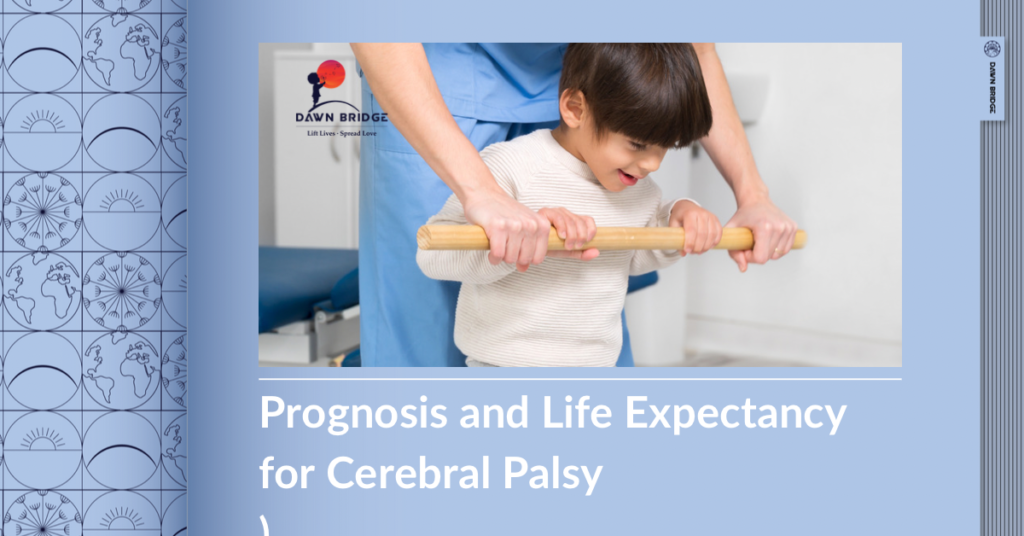Cerebral palsy is a heterogeneous group of conditions involving permanent motor dysfunction that affects muscle tone, posture, and movement. In children with cerebral palsy, children with oropharyngeal dysfunction are at risk of poor nutritional status. The professionals need to conduct a multidisciplinary evaluation to design a specific nutritional intervention for children with cerebral palsy.
Their Life Expectancy
The life expectancy of patients with cerebral palsy can vary based on their severity of impairment. However, most children with CP can survive to adulthood, and their life expectancy is highly associated with their extent of motor impairment and quality of life. And typically, high functioning CP, also called mild CP, individuals’ survival curves are similar to the general population. According to BMC Neurology, more than 80% of gentle CP individuals with mild CPhave a life expectancy of 58 years or more. Severe cerebral palsy has a shorter lifespan than mild cerebral palsy patients, which is a 40% chance of living to 20 years old.
Nutrition and Therapy
There is not yet a “golden standard” for managing feeding, growth and nutrition in children with cerebral palsy. This is because of the heterogeneity of the group of children with cerebral palsy. However, there is a consensus among medical practitioners that children with cerebral palsy should be assessed in terms of medical condition (symptoms, height and weight, nutritional status) and their psychosocial support (emotional, practical and financial).
Due to their activity level and basal metabolic rate, children with cerebral palsy typically need lesser energy requirements. Protein is vital for building muscle and repairing tissue, and it should be 2.0kg/per day and another 20% added when activity increase. Fat and oils are their essential energy sources.
Depending upon the child’s nutritional status, different modes of nutrition support are designed to assist them in consuming adequate nutrition.
Here are the examples:

- Adequate positioning and physical support: They have their customised seating to eat and swallow the food safely.
- Modified textures of food and thickness of fluids: They can eat an adequate amount of nutrition without being fatigued during mealtime
- Oral supplement: Children with CP have a high risk of vitamin D deficiency. A study shows that taking an oral vitamin D supplement could normalise their blood concentration of 25-hydroxy-vitamin-D.
- Enteral tube feeding: Children with functional GI tracts with significant feeding and swallowing dysfunction are advised to use enteral tube feeding. This feeding can avoid the risk of aspiration pneumonia and unsafe swallowing.
- Commercially modular products: For example, protein powder.
Types of Nutrients Children with Cerebral Palsy Need, But May Lack:
• Vitamin D and Calcium
Study shows that adding vitamin D and calcium will increase bone mineral density(BMD) of children with CP and hence might have a protective effect on atraumatic fractures.
• Magnesium
In some countries, the use of magnesium is routinely used by infants for the prevention of cerebral palsy. It is hypothesised that Magnesium has a neuroprotective effect, but the mechanisms remain unclear.
• Iron
Iron is found to be low in the serum of children with CP, generally due to insufficient iron intake.
• Vitamin C
It can acutely stimulate norepinephrine synthesis in neurosecretory cells.
Summary
It is a consensus that the aetiology of CP is multifactorial, and there is no standard nutritional therapy for encountering their nutritional deficit. If nutritional deficiencies in children with CP are neglected, they might face other serious health problems such as fractures, scurvy, anaemias. Prevention is better than cure; oral supplements are suggested to be used to prevent this devastating situation from happening.
Reference:
1.Kuperminc MN, Gottrand F, Samson-Fang L, Arvedson J, Bell K, Craig GM, Sullivan PB. Nutritional management of children with cerebral palsy: a practical guide. Eur J Clin Nutr. 2013 Dec;67 Suppl 2:S21-3. doi: 10.1038/ejcn.2013.227. Erratum in: Eur J Clin Nutr. 2014 Feb;68(2):284. PMID: 24301005.
2.Hutton JL, Pharoah PO. Life expectancy in severe cerebral palsy. Arch Dis Child. 2006 Mar;91(3):254-8. doi: 10.1136/adc.2005.075002. PMID: 16492890; PMCID: PMC2065925.
3.Kuperminc MN, Stevenson RD. Growth and nutrition disorders in children with cerebral palsy. Dev Disabil Res Rev. 2008;14(2):137-46. doi: 10.1002/ddrr.14. PMID: 18646022; PMCID: PMC2830751.
4.Jekovec-Vrhovsek M, Kocijancic A, Prezelj J. Effect of vitamin D and calcium on bone mineral density in children with CP and epilepsy in full-time care. Dev Med Child Neurol. 2000 Jun;42(6):403-5. PMID: 10875526.
5.Le Roy C, Barja S, Sepúlveda C, Guzmán ML, Olivarez M, Figueroa MJ, Alvarez M. Vitamin D and iron deficiencies in children and adolescents with cerebral palsy. Neurologia (Engl Ed). 2021 Mar;36(2):112-118. English, Spanish. doi: 10.1016/j.nrl.2017.11.005. Epub 2018 Jan 17. PMID: 29342407.

